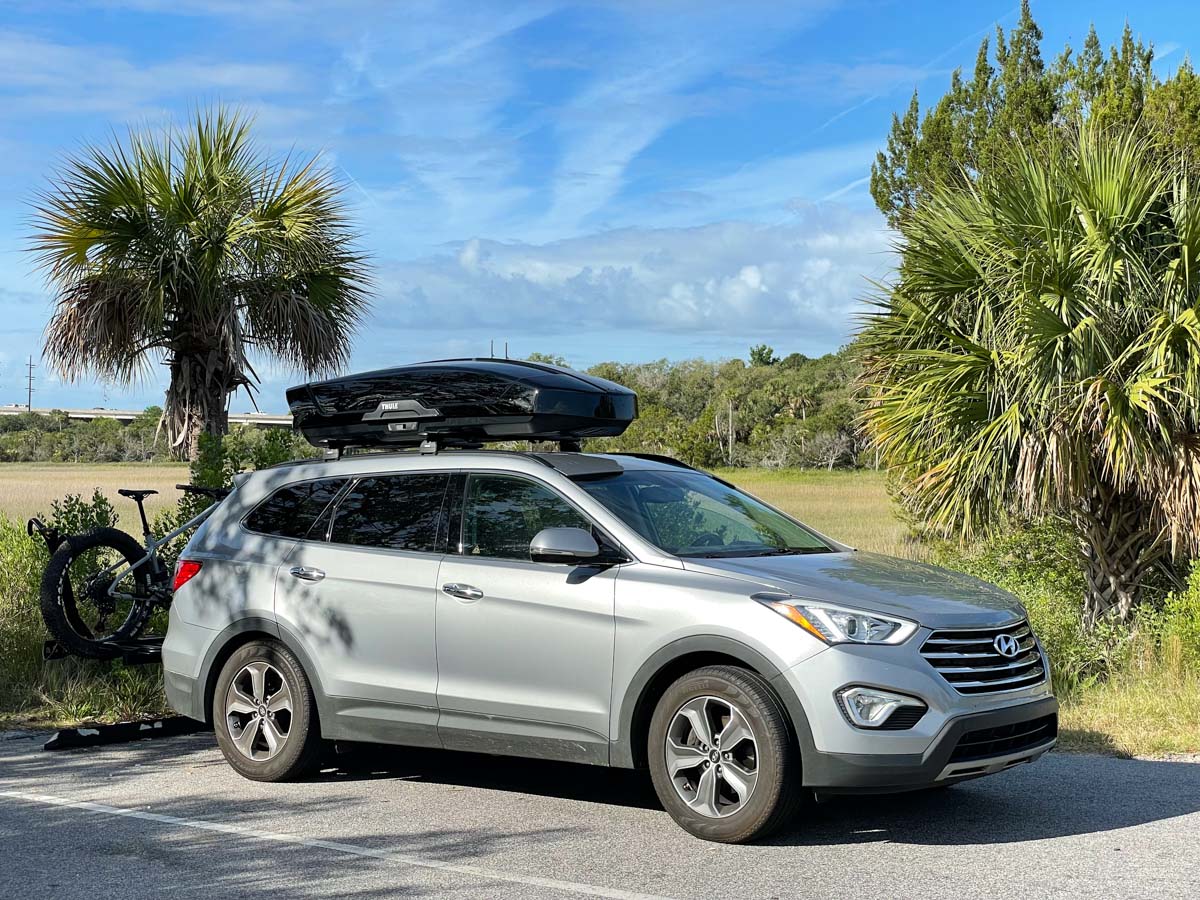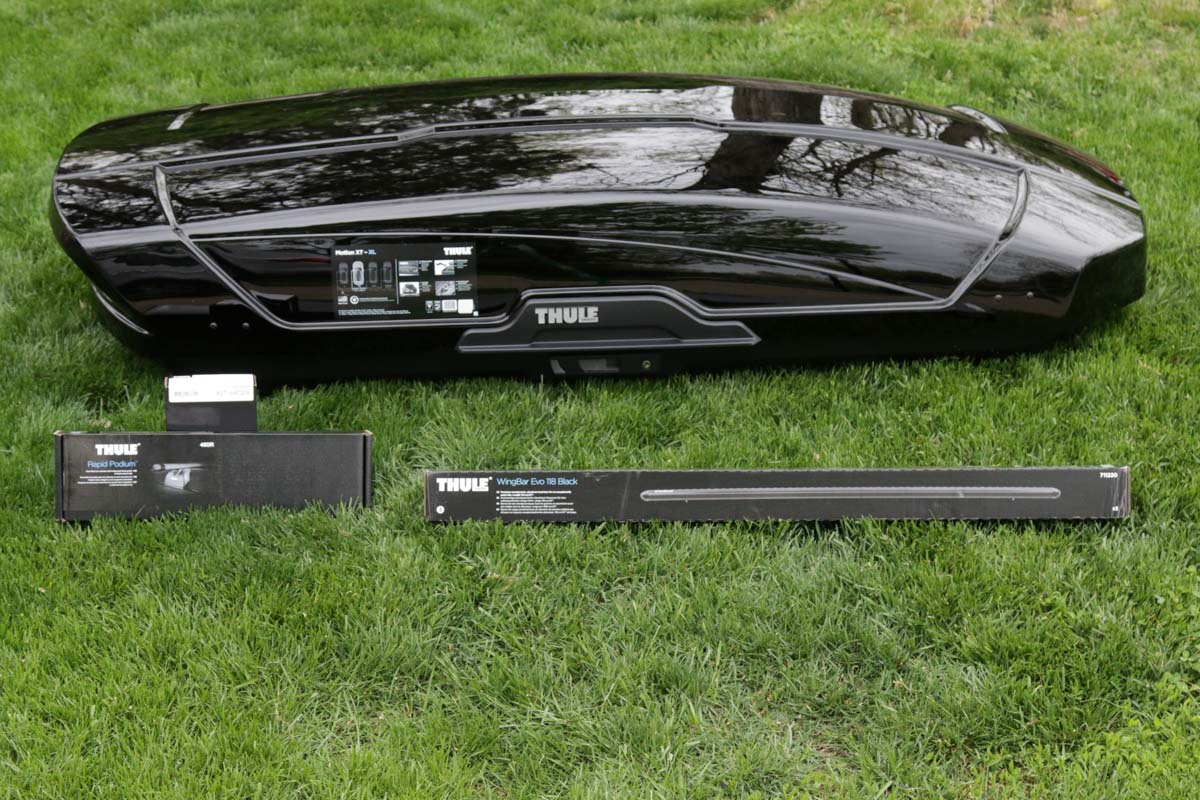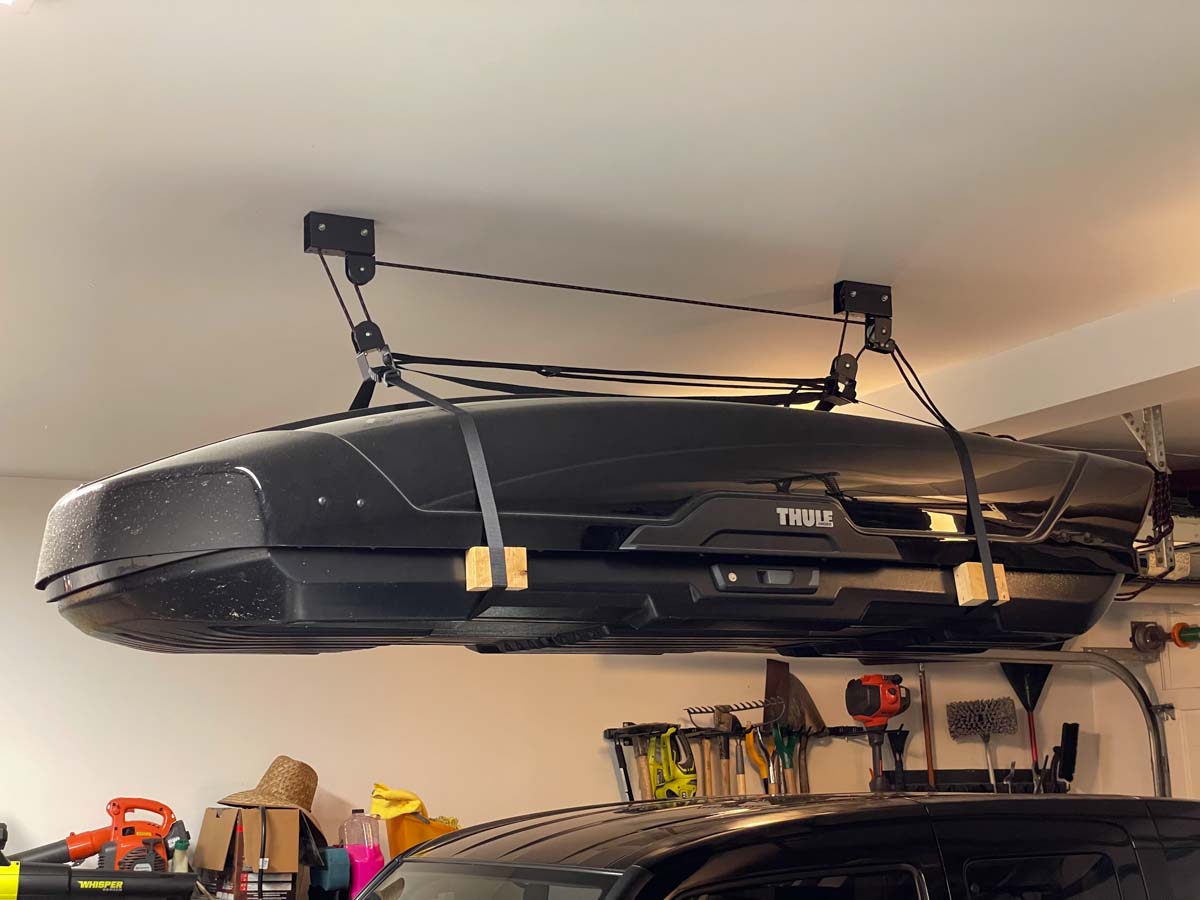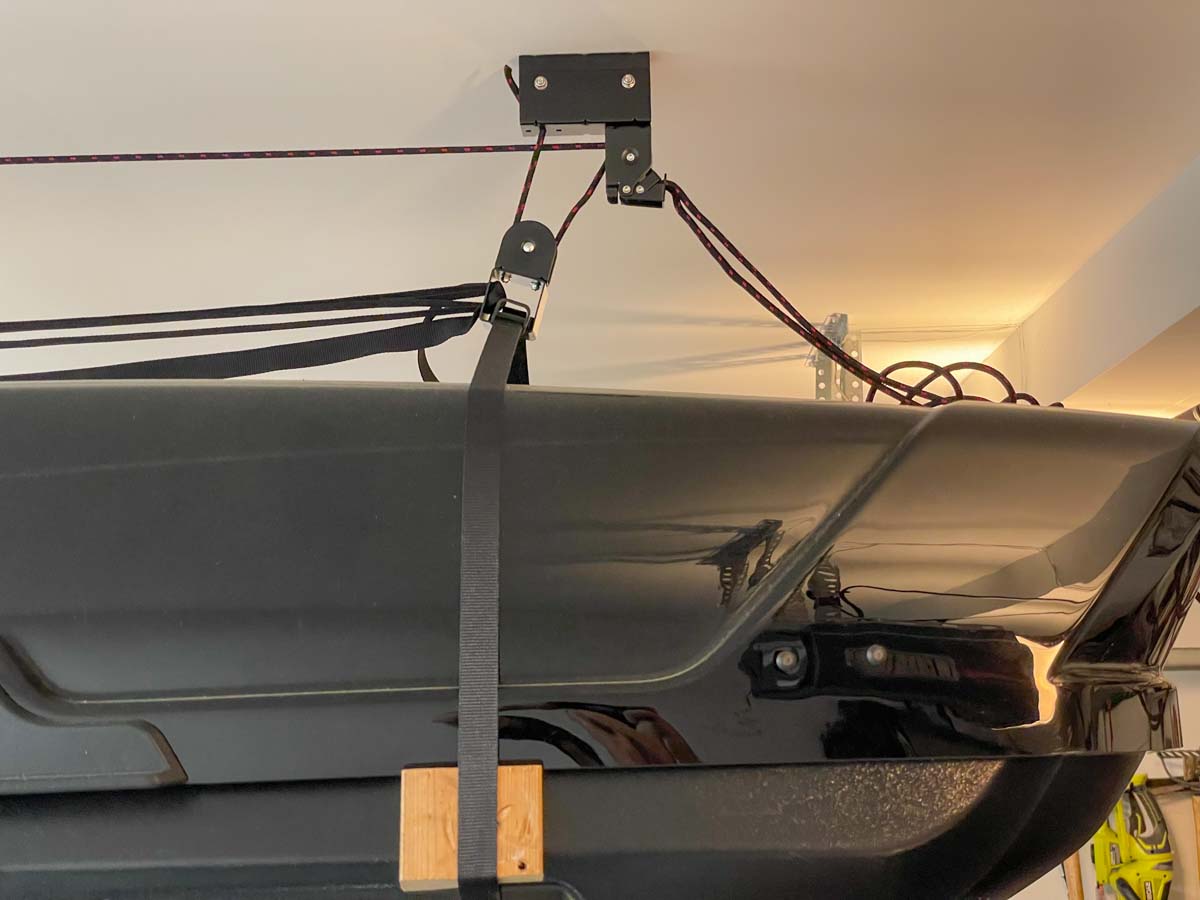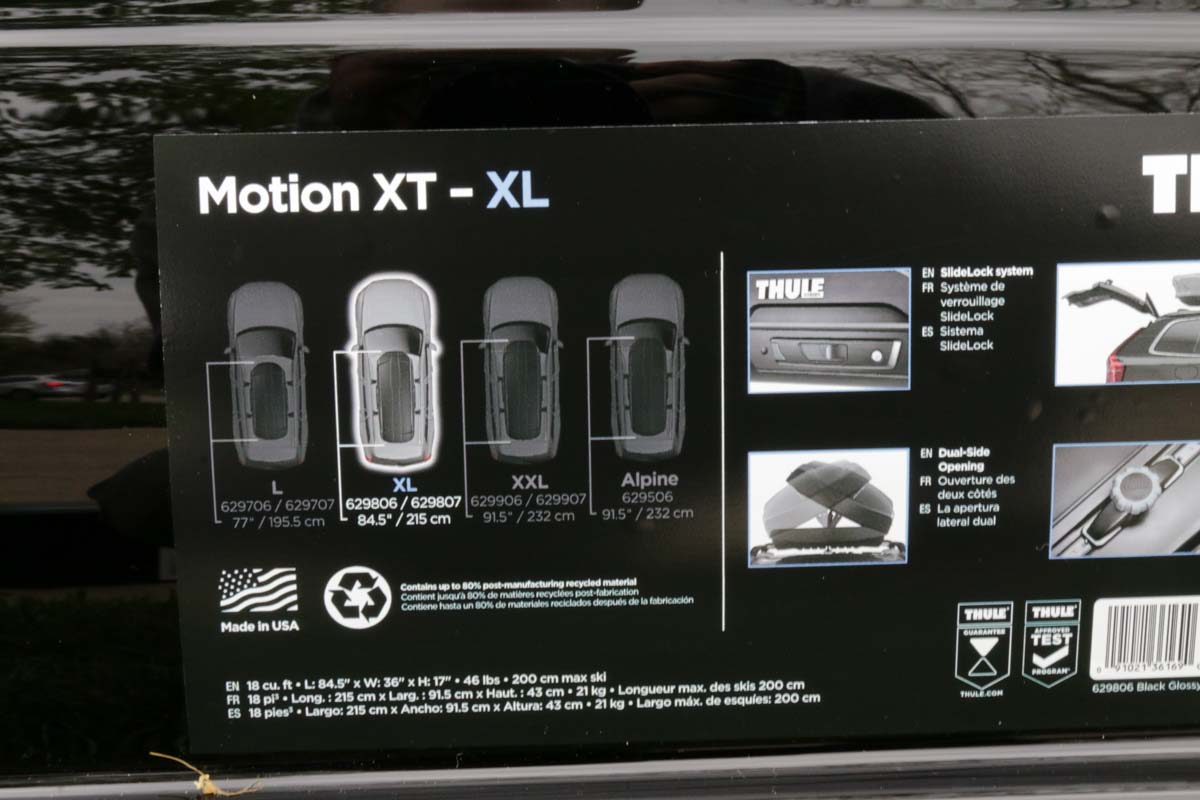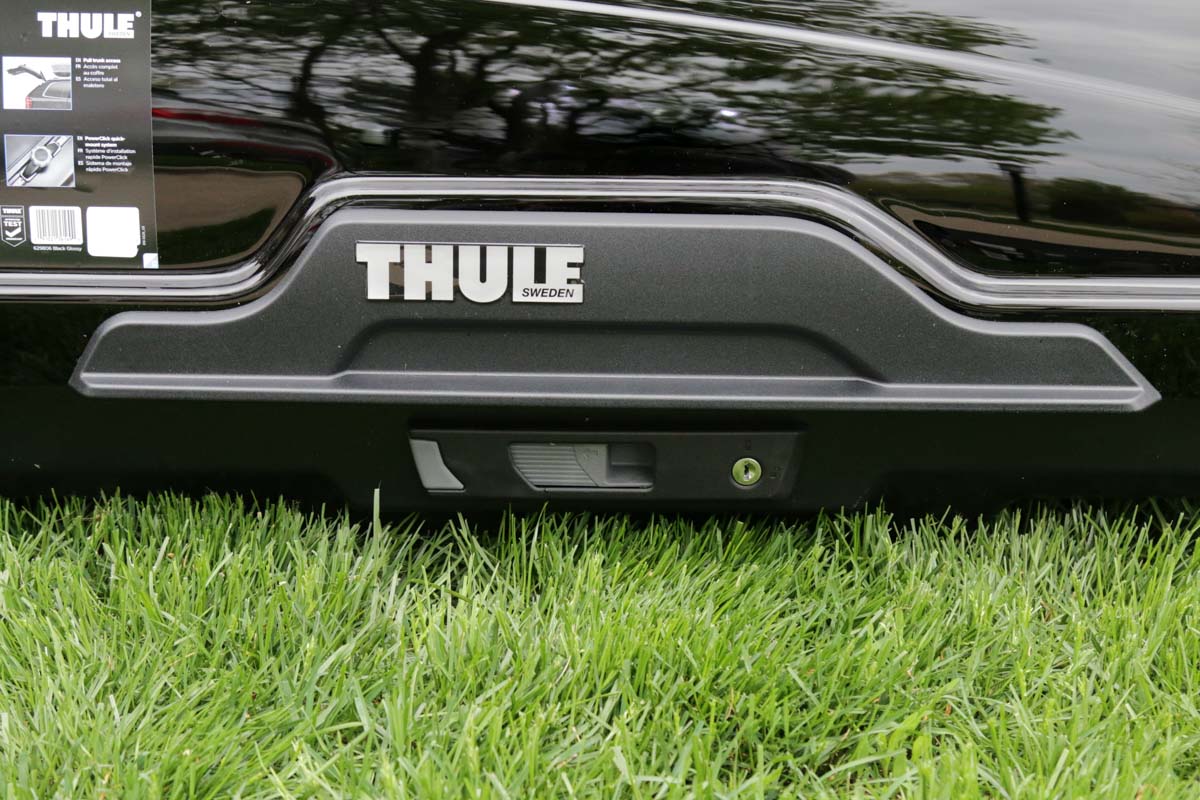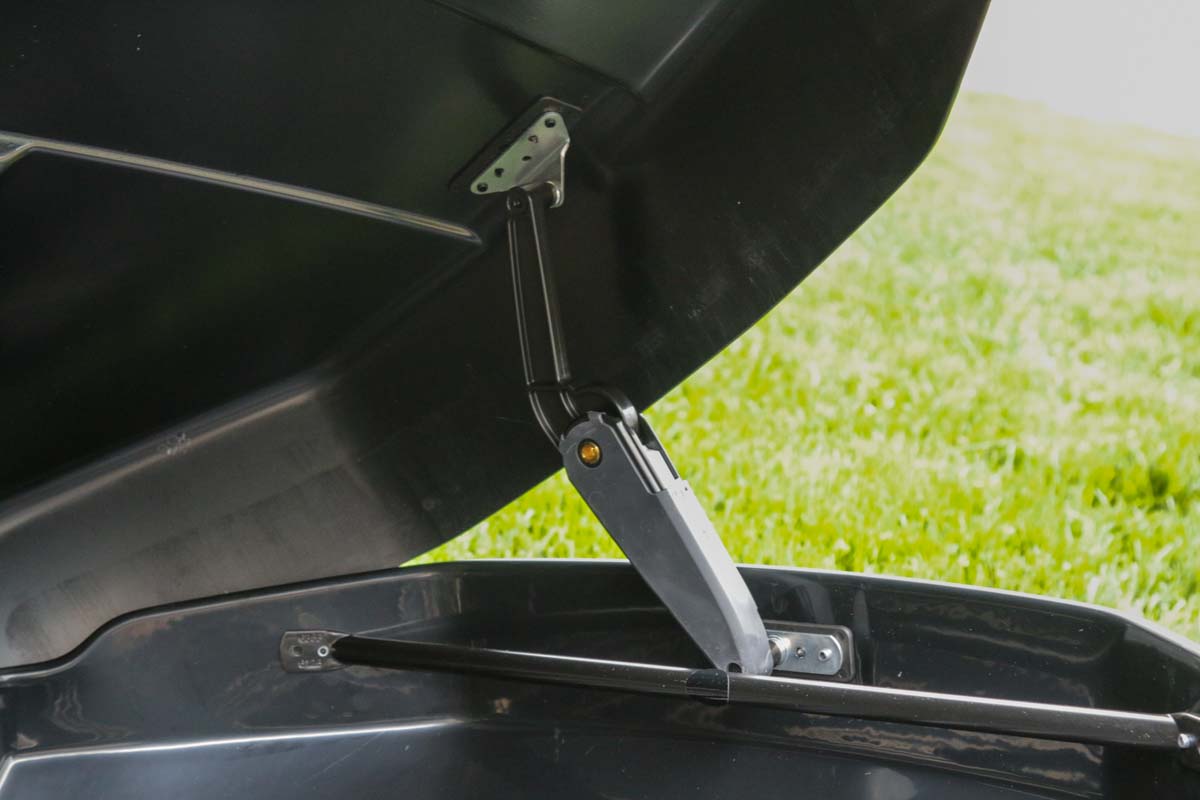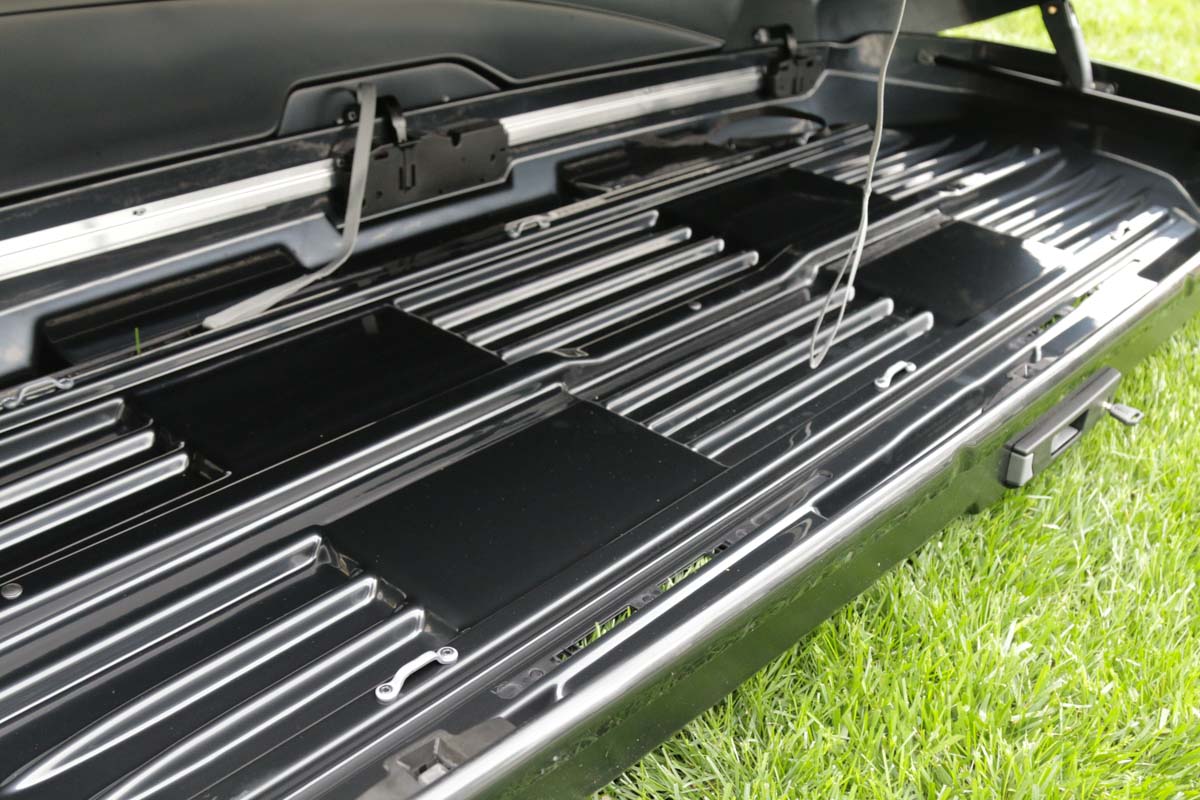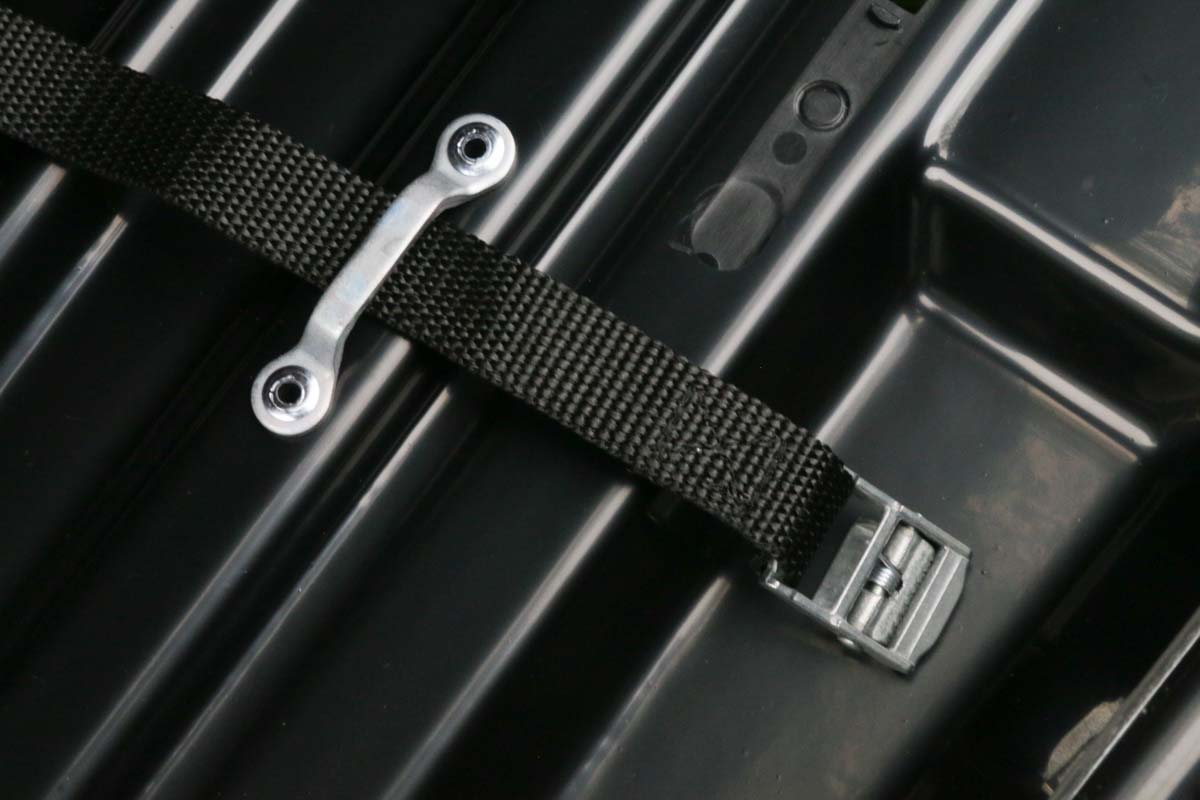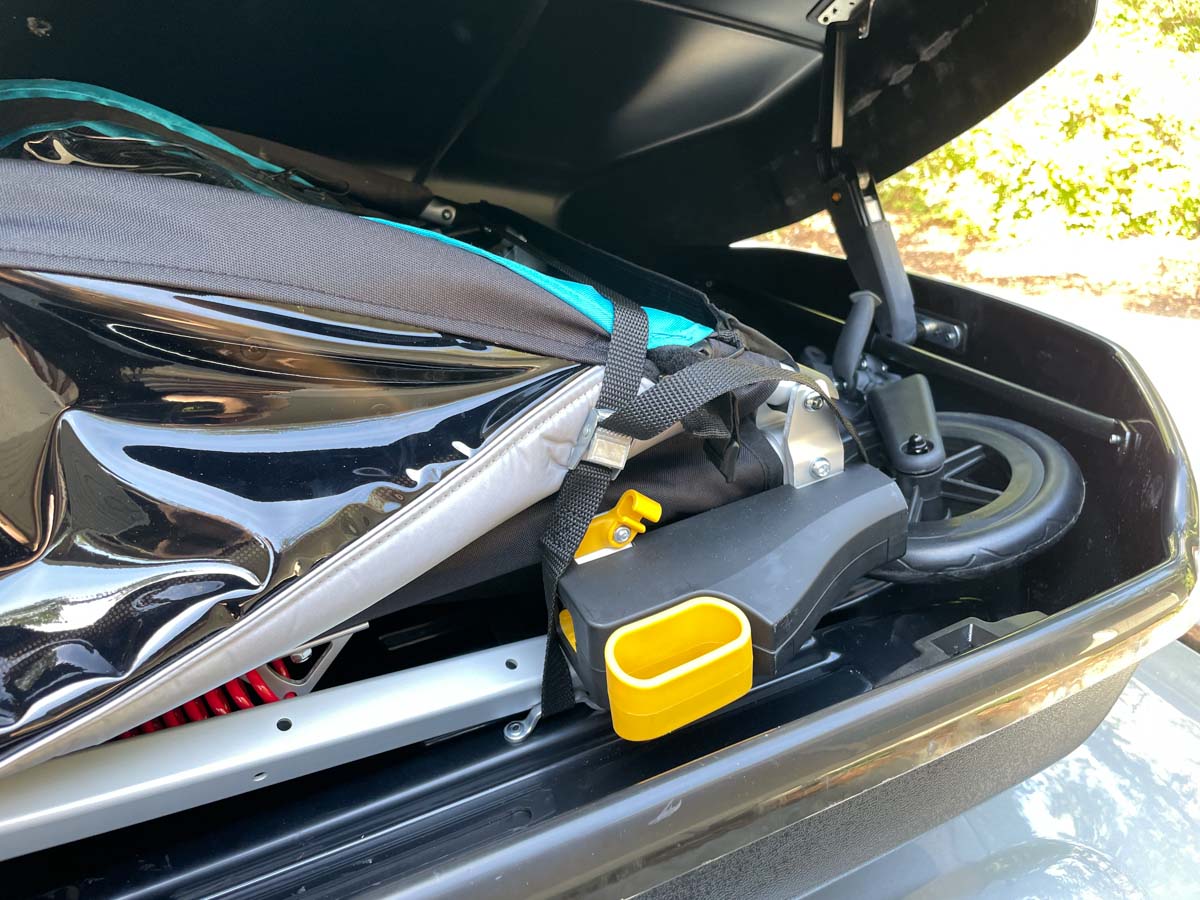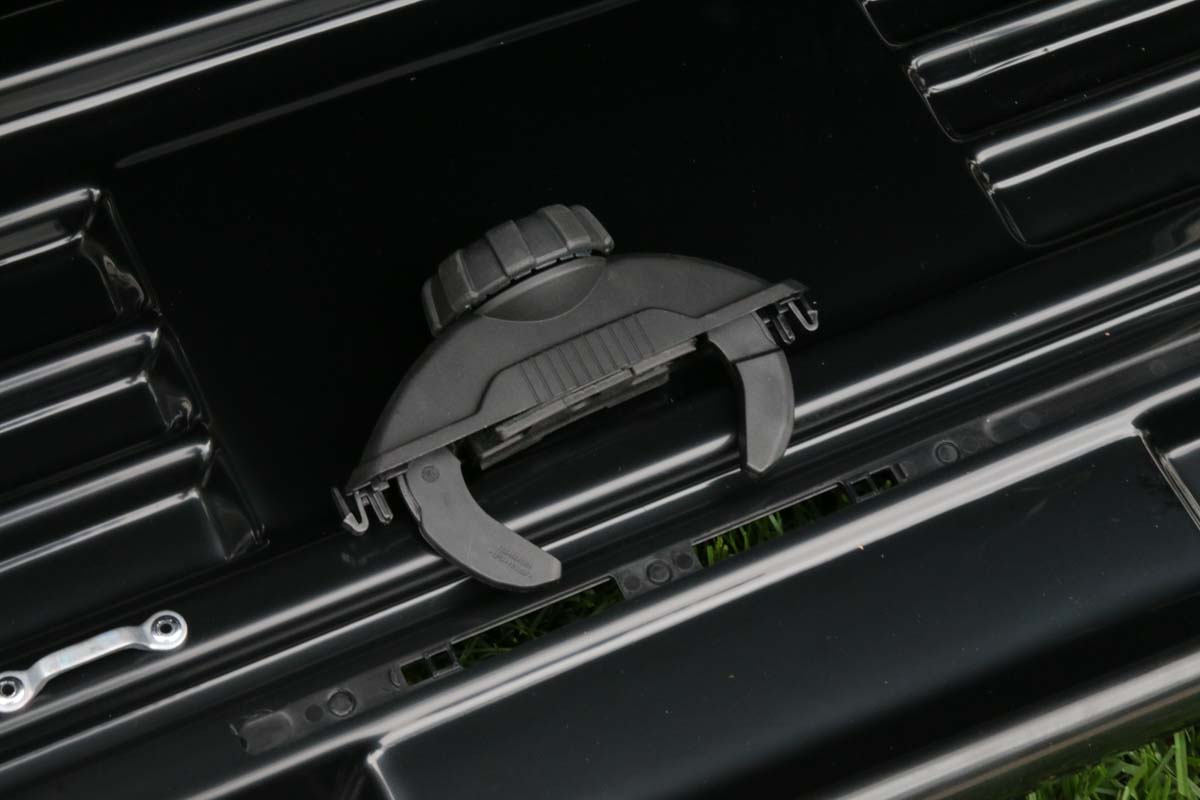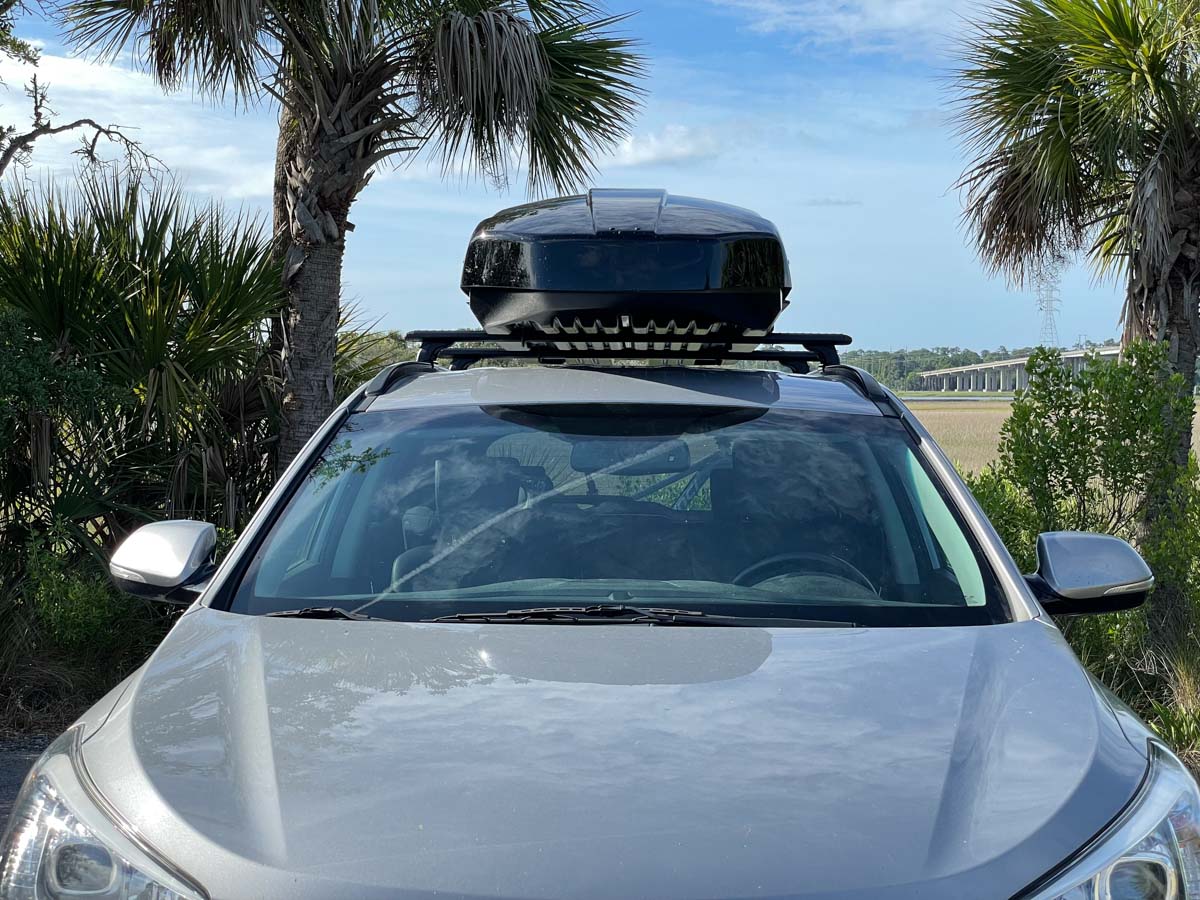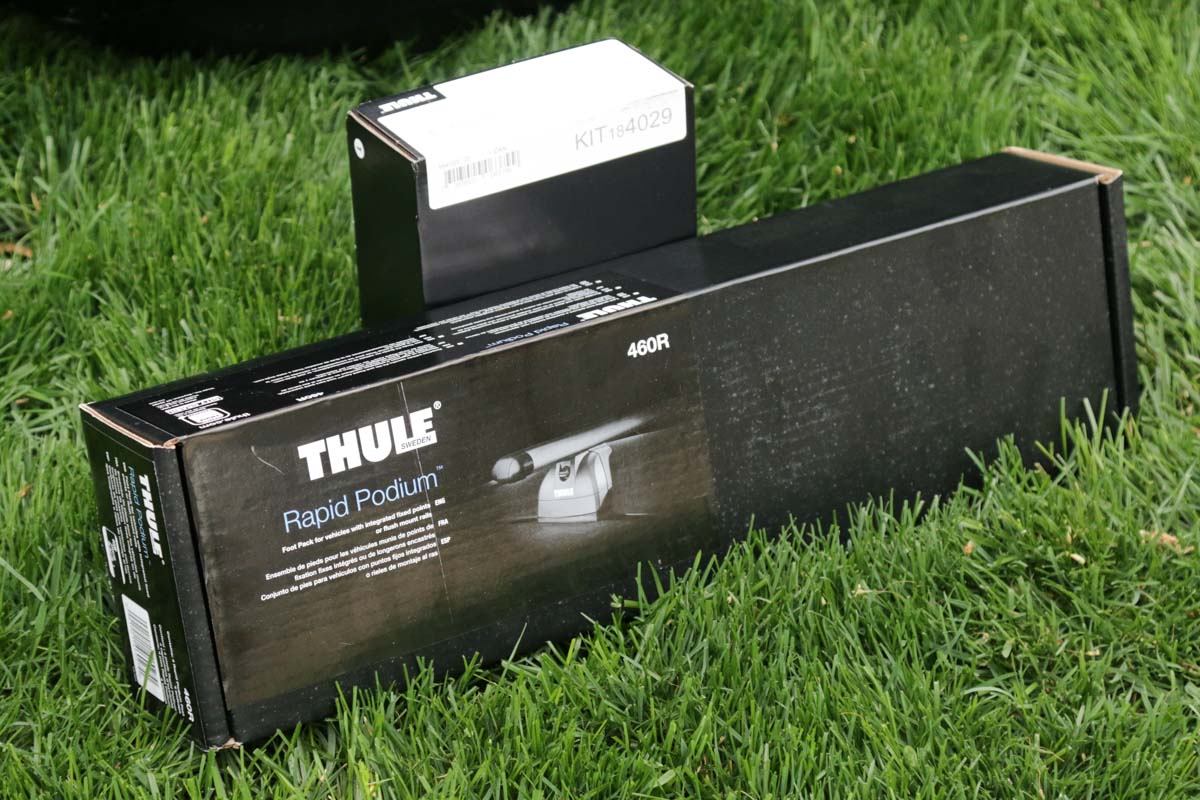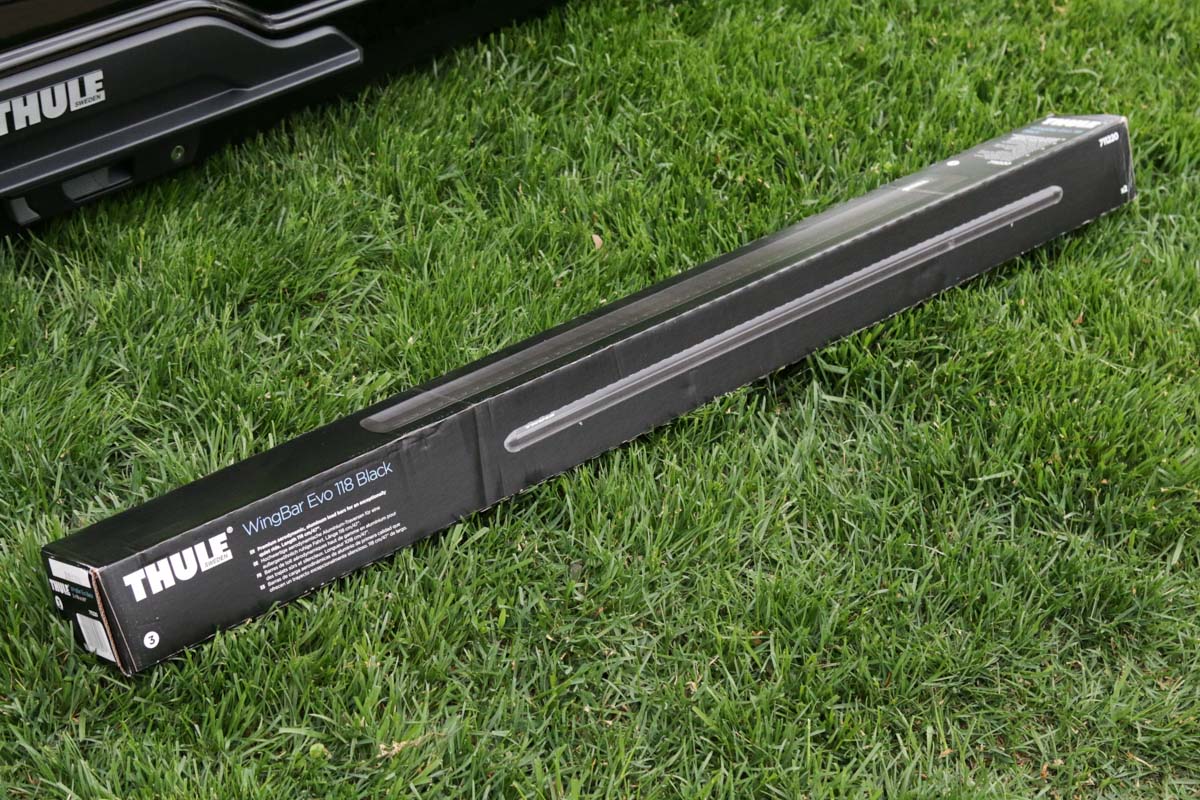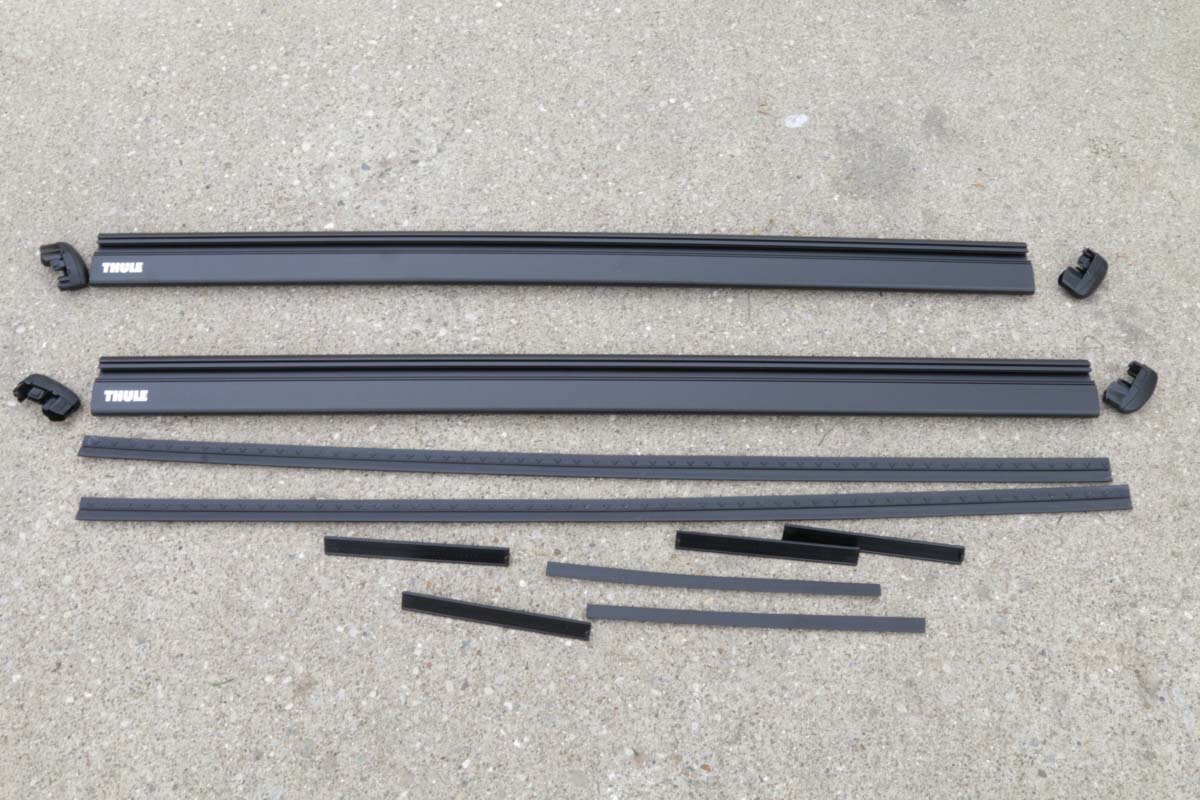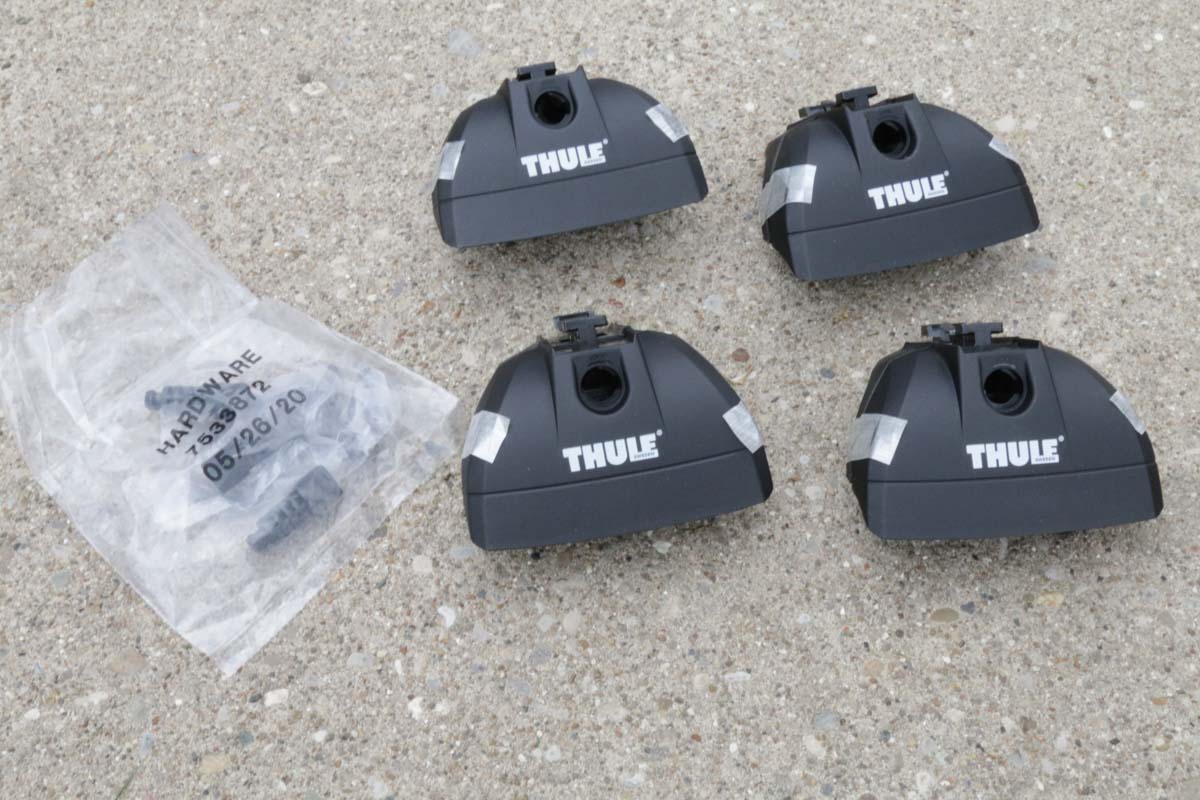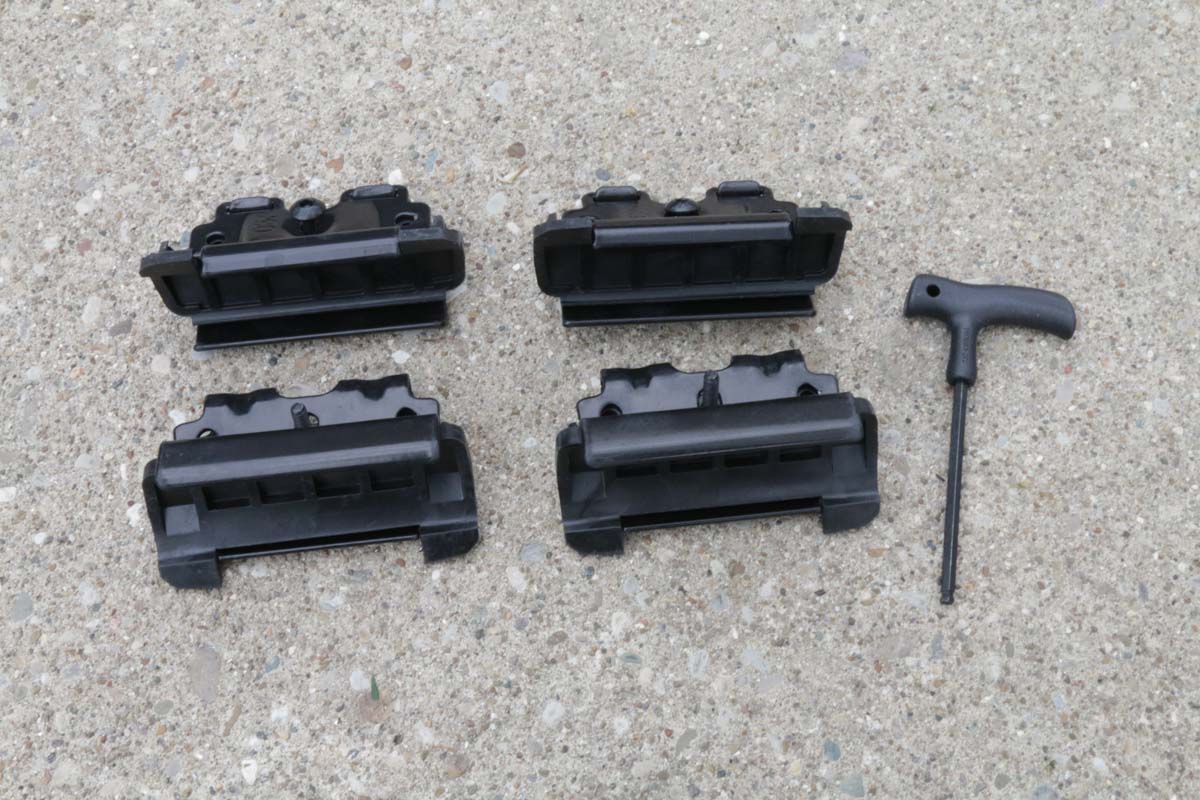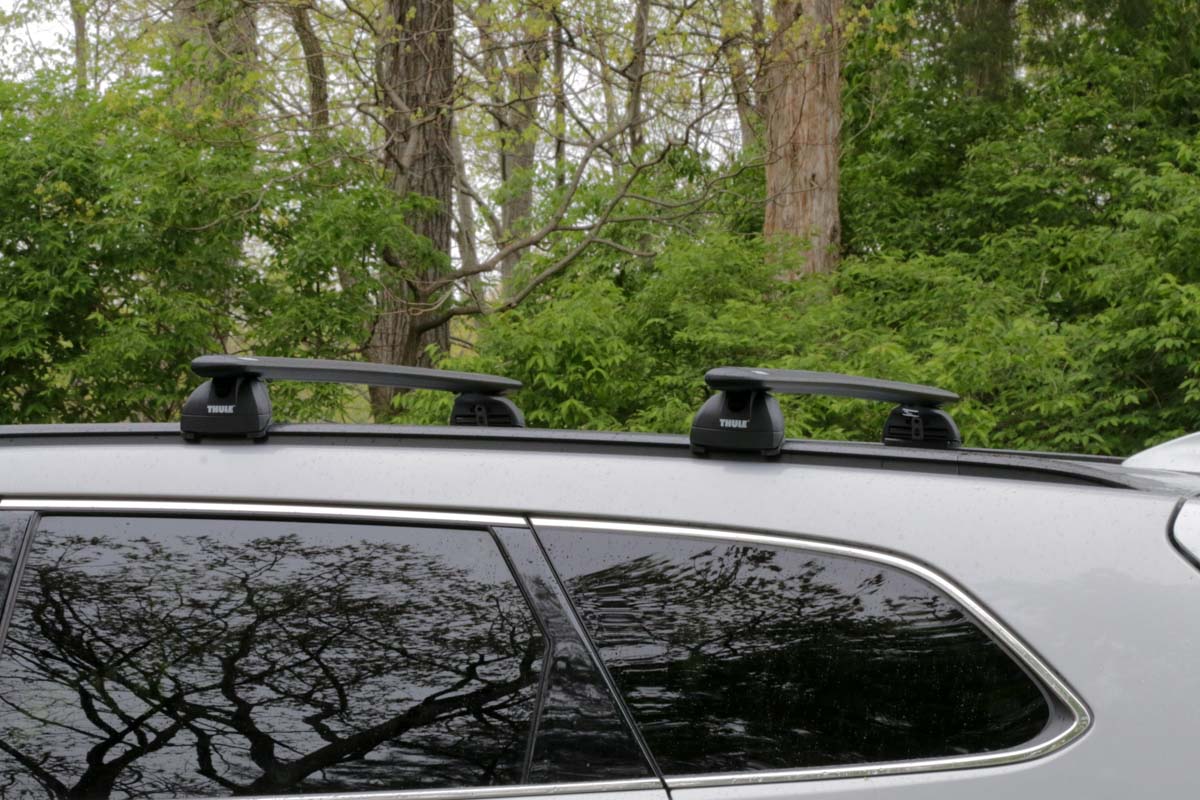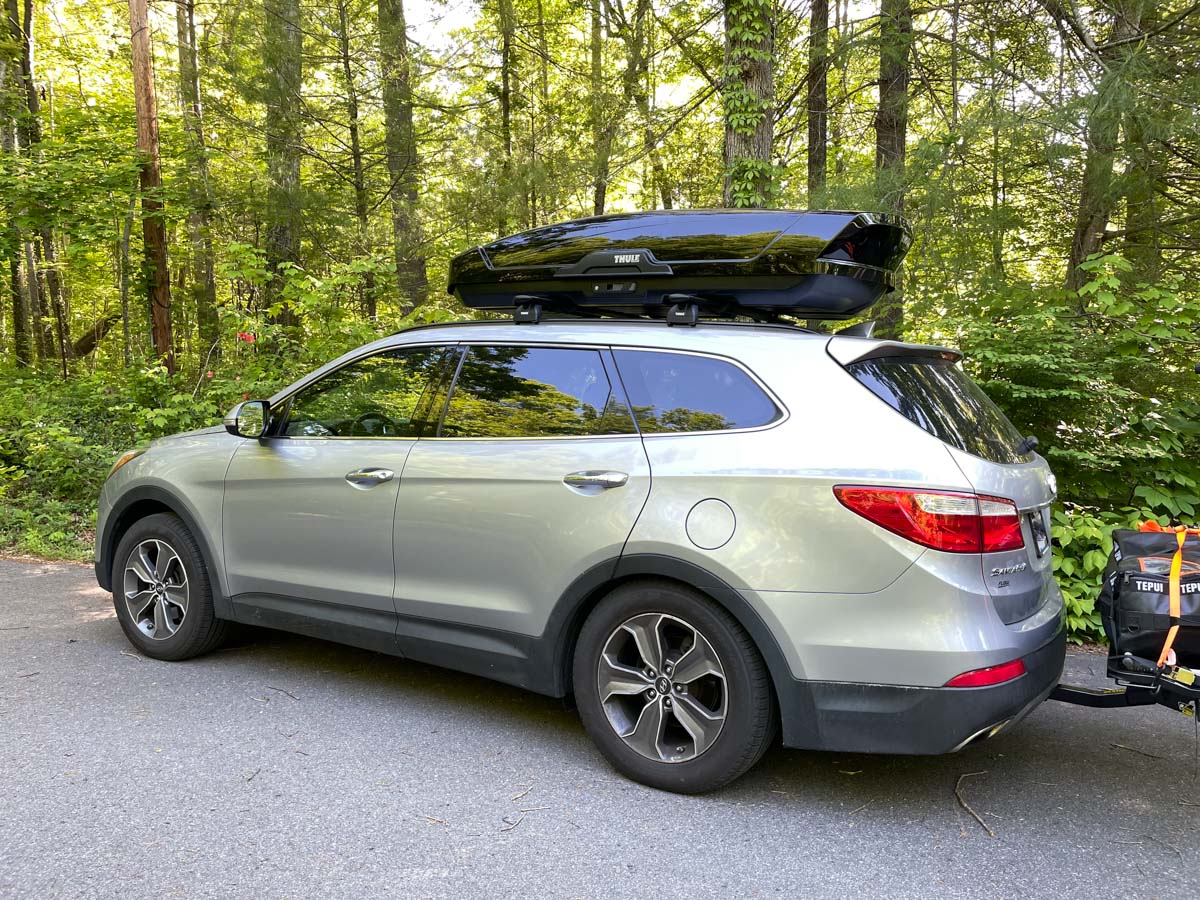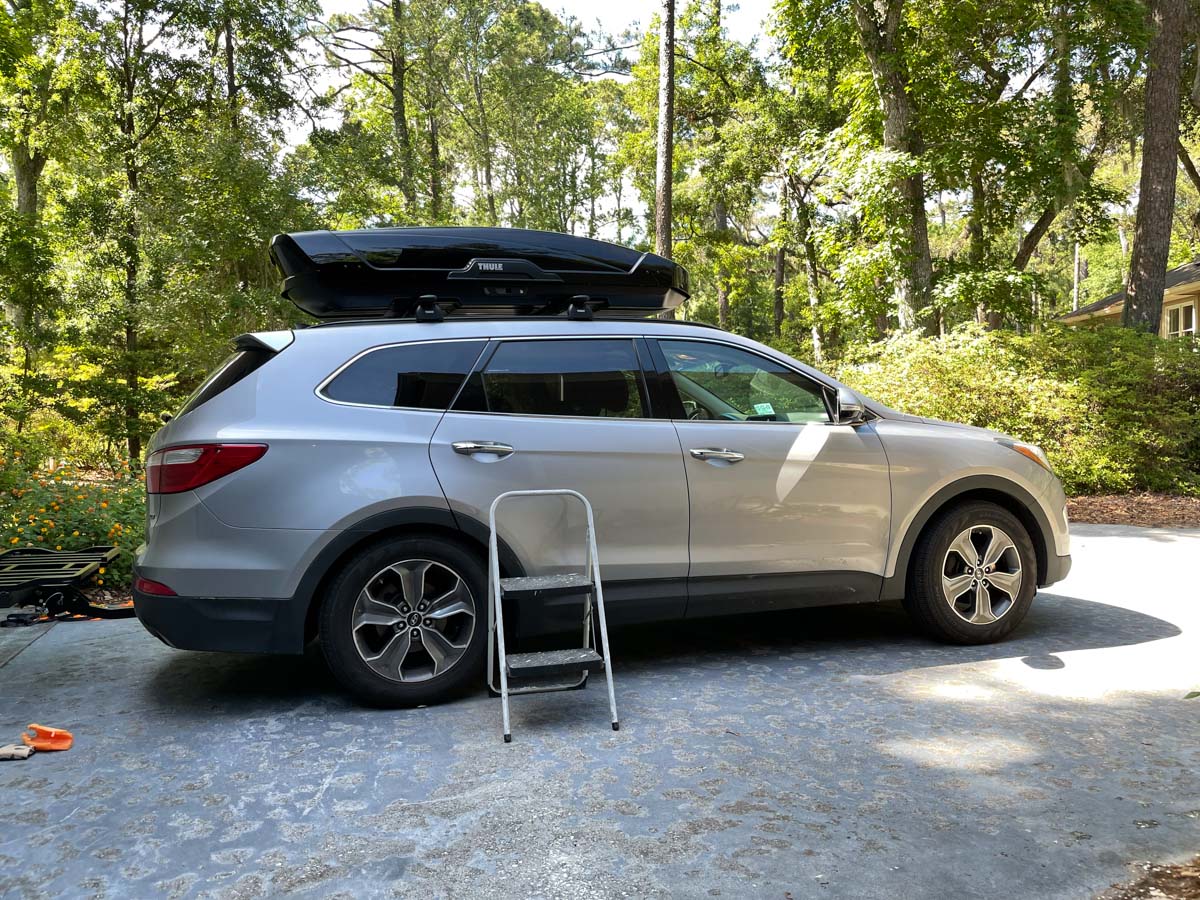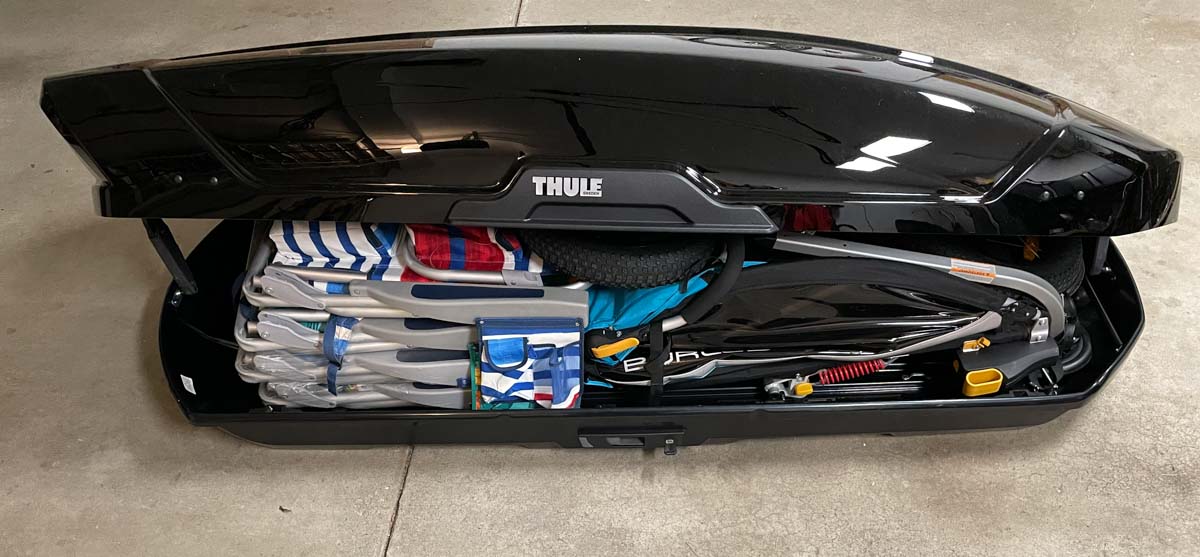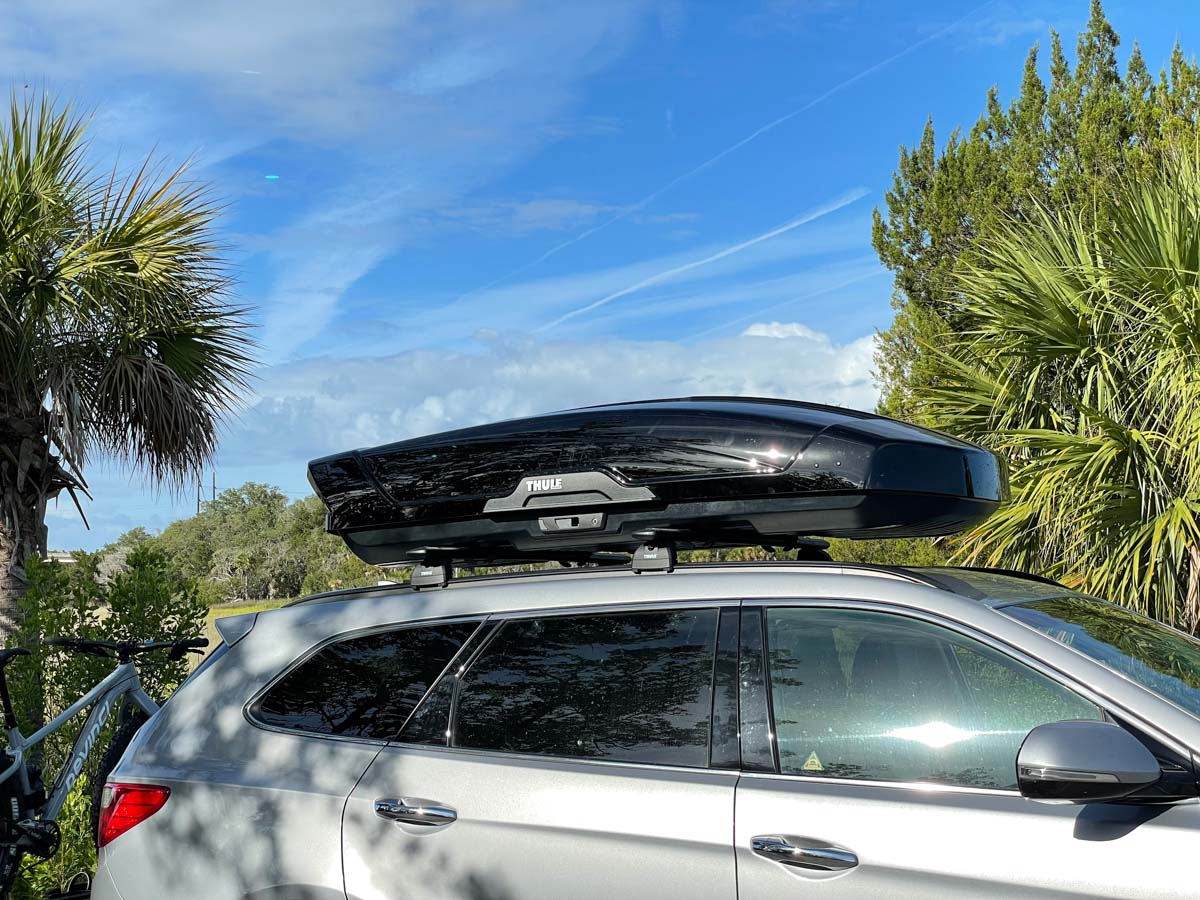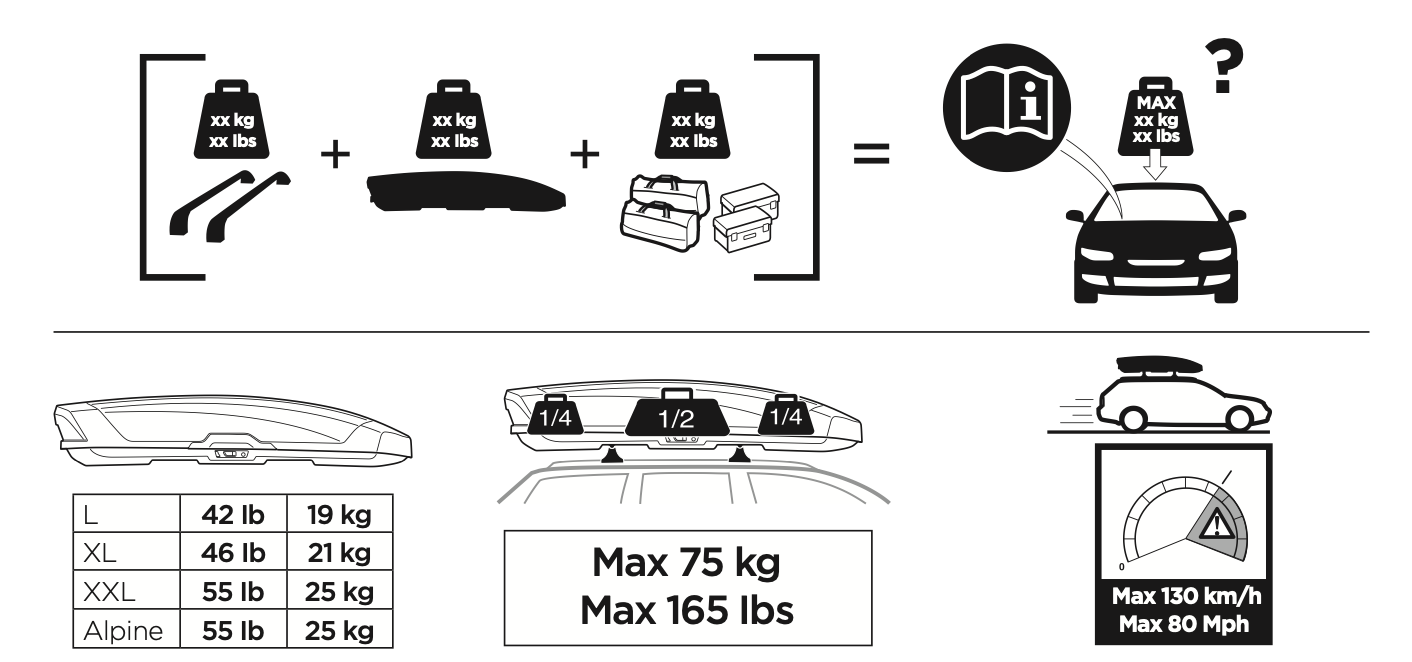For a number of reasons, the great American road trip is making a comeback. Even with the worst of the pandemic (hopefully) in the rearview mirror, driving to your next getaway may be more appealing than flying – but what about all that gear? Whether you’re a new parent toting around way too many things for the latest addition to your family, or a weekend warrior trying to maximize your weekend, it’s easy to quickly surpass the cargo-carrying abilities of your vehicle.
Fortunately, there are many different products out there to make your next journey a little easier. Products like the Thule Motion XT XL Roof Box.
Roof Top Box Basics
If you need extra cargo space, a rooftop box is a great place to start. They easily attach to roof racks (more on that below) and offer varying amounts of additional storage. The best models will be aerodynamically designed to have a minimum impact on gas mileage, while also cutting down on wind noise. Enclosed models like the Thule Motion XT make it very easy to load and store smaller and awkward-shaped items–though it’s still best if they’re anchored inside the box to prevent them from sliding around.
There are a few drawbacks to a rooftop cargo box – which are mostly due to putting something large on the roof of your vehicle. It can be harder to reach because of the height, and as mentioned, rooftop boxes can negatively affect gas mileage and create additional wind noise. In this case, though, the Thule proved to be great on both accounts.
You also have to remember you have something on the roof. Parking in the garage and some drive-throughs will be out of the question depending on the vehicle and the situation.
How to Store a Roof Top Cargo Box
One other potential negative to consider is storage. Rigid boxes like the Thule Motion XT don’t collapse any smaller, so either you’ll have to keep it on your roof permanently (not recommended), or find a place to store the full-size box. The box itself isn’t that heavy at 46lbs, but it is awkward to carry for one person. Note that Thule does not recommend storing the box vertically.
For me, I found the best storage option to be a ceiling-mounted hoist system in our garage. Thule actually sells their own MultiLift system for this very purpose, but at $269.95, it’s a pricey option. Since I was spending my own money on the lift, I was inclined to check out the much cheaper option from StoreYourBoard. At $47.99, it seemed like it was worth a try.
And it is–with one big caveat. The Thule MultiLift operates via hand crank system that is offset from the centerline of the cargo box. That means that the crank clears the box, up or down. The StoreYourBoard hoist has a pulley system directly in line with the center of the box. That can make it a little tricky to lock and unlock the system since the cargo box wants to get in the way of the rope. While annoying, you can still get it to work, and I’ve been using it for a year now with no major issues. For the price, it’s a great option.
I did add some wood blocks under the lips of the upper shell to better support the straps, and keep them from deforming the plastic during long-term storage.
Thule Motion XT Cargo Box
There are a number of options when it comes to cargo boxes, but the Thule Motion XT seems like a great place to start without going over the top. The Motion XT sits around the middle of Thule’s product line and is built to be practical, sleek, and easy to use. It’s also available in either Glossy Black or Glossy Titan finish.
The Motion XT boxes can open from either side with a simple sliding latch system. The latch is also lockable and compatible with the Thule One Key System. That means you can use the same key to lock the box as you use to lock the rack to your vehicle (locks for the box are included, but the same keyed locks for the towers are sold separately as 2, 4, 6, or 8 packs). Since the rack attachment mechanism is accessed from the inside of the box, locking the outside of the box effectively locks the box to the rack as well.
When closing the box, the same system latches shut as you push down the lid. You’ll know when the lid is properly secure when the latch snaps into its original position.
The box opens like a clam shell from either side with a special lid-lifter hinge that goes in both directions. These hinges also make it easier to open the lid fully. They’re not automatic or anything, but they assist in the process.
Inside, the interior is fairly spartan. The floor is ribbed for rigidity and there are fixed loops to attach the included cargo tie-downs. Thule’s more expensive Vector line has a felt-lined interior, but the Motion XT sticks with bare plastic.
The cargo tie-downs are important to prevent the contents from sliding around inside. It also helps prevent items from rubbing against each other which can cause unintended damage if not packed properly. As with any cargo storage on a vehicle at highway speeds, there are a lot of vibrations to consider.
How to Attach the Cargo Box to the Roof Rack
To mount the Motion XT to your roof, you’ll need some sort of roof rack. If you have a factory rack with crossbars–great, you’re all set. The wide PowerClick quick-mounts snap into the slots inside the box, with the claws facing down. From there, it’s a matter of lining them up with the cross bars, dropping the box onto the roof rack, and turning the PowerClick mounts until they… click. They’re pre-set to click once they’re properly tightened. And that’s it.
I tried both mounting it centered on our rack, and mounting it offset to one side to make it easier to access from the side of the vehicle. On our car, having it center-mounted resulted in better handling – enough that it was worth having to reach farther over the edge to load and unload. Your setup may vary, so try out different positions to find what’s best.
Roof Rack
If your vehicle doesn’t have factory crossbars, you’ll need to add your own roof rack. For our Hyundai Santa Fe, the flush rails on the roof meant I needed the full setup–Thule Rapid Podium Towers with the corresponding 184029 fit kit, and I went with the Thule WingBarEvo 118s. To be clear, one fit kit includes a set of four feet to fit an entire rack system. So you only need one fit kit per rack.
There’s definitely some assembly required to the roof rack, but for the most part, the instructions make it pretty easy. Just plan on an afternoon for the install and take your time. When you put your vehicle information into the ‘Fit My Car’ function on Thule’s site, it will give you important fit information including the maximum weight limit (165lbs) and the maximum barspread (29″).
Surprisingly Quiet
Once the whole setup is on the car, the reward is a very quiet ride, even with the box in place. Supposedly the WindDiffuser tech that Thule uses on the bar plus the TrailEdge design helps keep the noise down as well as improve fuel economy. I can vouch for the noise –these are very quiet. Some of the quietest roof bars I’ve used. There’s the slightest whistle at times, but that’s about it.
With the box in place, it’s noisier, but not by much. When you factor in the usual road and wind noise from driving at highway speeds without a box, the addition of the box on top is hardly noticeable. In terms of driving feel, at high speeds or in gusty crosswinds, you’ll be aware of the box’s presence, but it’s completely manageable.
What can you put up there?
The storage possibilities up top are vast, but first, you have to get up there. I’m not a tall man at 5’8″, and with the box centered on the roof of our Santa Fe, that meant our small Cosco step ladder that folds flat, had to go with us. Not necessarily to get the stuff in and out, but to make sure it was properly lashed down with the included tie-down straps. There are other options for roof access like a Moki Door Step, but the step ladder made it easier to load large items…
Like our Burley D’Lite X child trailer with stroller kit, and fat bike wheels along with four Tommy Bahama Beach Chairs (the backpack function makes them easy to carry by bike). That pretty much maxed out the Motion XT XL, but it was a lot of rigid, bulky, sand-covered items that were better kept outside the car, but also out of the elements. If you don’t have large bulky items, the box will gobble up quite a few bags, suitcases, or even a few golf bags depending on the size. And if you’re returning after a long adventure on the road, stashing your dirty, smelly gear up top could be a big relief to the passengers riding inside.
Thule doesn’t make any claims that the box is completely waterproof, but it would take a lot of water to get the contents wet. We have driven through complete downpours, and everything stayed dry.
Pro tip: practice packing your cargo box with it on the ground, before you put it up on top of your vehicle. That will mean fewer trips up and down a ladder, and better packing overall.
Will a Roof Top Cargo Box Affect Gas Mileage?
The short answer is yes, probably. But not as much as you may think. The Thule Motion XT combined with the WingBar Evo system seems to be a very aerodynamic setup, which is why it’s so quiet. We saw about a 1-2mpg drop in fuel efficiency with a fully-loaded vehicle (including two bikes on a rear hitch rack).
What Size Cargo Box for my Vehicle?
There are technically four sizes for the Motion XT range with the Alpine being the smallest, followed by the L, XL (tested), and XXL. The Alpine and the L offer the same 16 cu ft. of volume, but the Alpine is longer and thinner to accommodate skis or other long/thin items. The XL bumps up the volume to 18 cu ft., and the XXL checks in at 22 cu ft.
I went with the XL size for two reasons: one, it was the only one that came into stock after waiting for months, and two, it was about the same length as the roof on my wife’s Hyundai Santa Fe. When deciding what size rooftop cargo box you can run, you have to remember that if you have a vehicle with a rear liftgate like a van or SUV, then the back of the box has to clear the trunk door when it’s open. The front of the box can overhang the windshield, but it’s not recommended to go too far out in front.
My recommendation for sizing would be to go with the biggest cargo box that will work with your vehicle. You’ll never regret having the extra space, and you’re already putting a large box on the roof, so you might as well get the most out of it.
How Much Weight Can You Put in a Roof Top Cargo Box?
When it comes to figuring out the maximum weight you can carry with your roof top cargo box, there are a few things you need to consider. First, you have to check for the maximum load rating on your vehicle’s roof. In this case, that is a maximum of 165lbs–which includes the weight of the roof rack itself, the weight of the box, and the weight of the contents. For this setup, that meant I could carry roughly 115lbs worth of gear.
Note that Thule recommends placing half that weight between the cross bars, and 1/4 on each end. Also, note that the maximum safe speed is 80mph. Currently, the highest speed limit in the United States is also 80mph. So unless you live in Europe near an unrestricted Autobahn, that should be plenty.
Final Thoughts
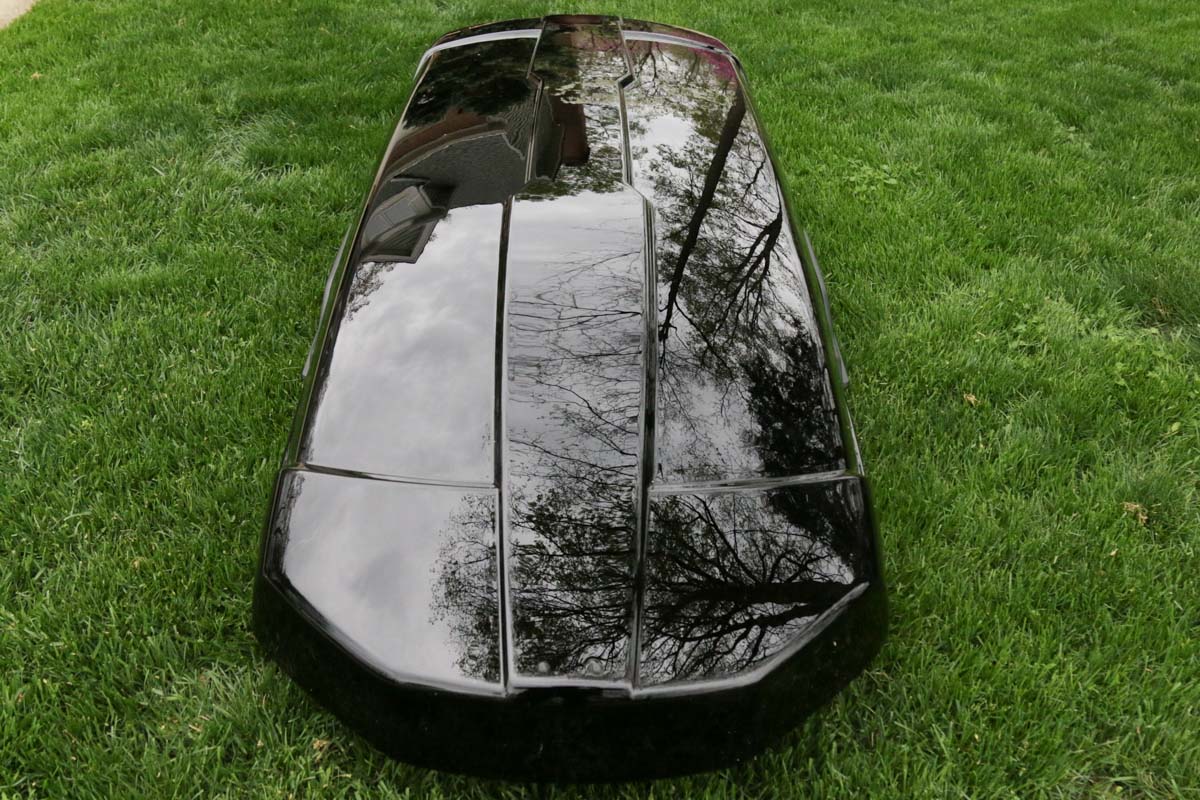
Cargo boxes are one of those products that when you need one, you know you need one. By that point, usually, you’ve maxed out the storage capacity of your vehicle and likely a hitch-mounted rack if you’re bringing bikes. The question then becomes which roof top box to purchase. Over the course of testing, the Thule Motion XT never presented a reason why you shouldn’t consider it for purchase.
For a premium roof top cargo box, it’s priced competitively, features intuitive latches, and is easy to mount, load, and unload. For those who need the extra space, the few drawbacks to any cargo box are worth the price of admission (or storage). For me, that has meant that packing for those family road trips is easier than ever.
